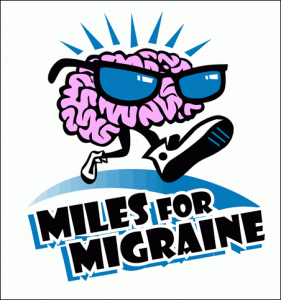 Through Headache on the Hill, patients and healthcare providers lobby members of Congress each year to increase NIH funding for research into headache disorders. The first year, participants were told that they would have to raise “big noise” in their own communities to see a change. This is something people who advocate for more research funding hear often: lawmakers must believe that the people they represent care about migraine and other headache disorders. That is, we won’t get research funding until we raise awareness about the impact these illnesses on people’s lives.
Through Headache on the Hill, patients and healthcare providers lobby members of Congress each year to increase NIH funding for research into headache disorders. The first year, participants were told that they would have to raise “big noise” in their own communities to see a change. This is something people who advocate for more research funding hear often: lawmakers must believe that the people they represent care about migraine and other headache disorders. That is, we won’t get research funding until we raise awareness about the impact these illnesses on people’s lives.
Miles for Migraine Raises Awareness, Research Funding
In 2008, Eileen Jones decided to make big noise by founding Miles for Migraine. After attending the first Headache on the Hill in 2007, Eileen, a nurse who has migraine, founded Miles for Migraine to raise both funds for and awareness about migraine. Since the first race in San Francisco, Miles for Migraine has raised $79,000 for migraine research and advocacy. Their goal is to fund 30+ fellowships to train new doctors to become headache specialists. Prior funding recipients include:
- University of California San Francisco Headache Center
- A research collaboration between Thomas Jefferson University and University of Pennsylvania
- Jefferson Hospital Research Center
- Alliance for Headache Disorders Advocacy
- Children’s Hospital of Philadelphia
Race Locations
That $79,000 is just the start. Last year, the race expanded to Philadelphia; this year, a race has been added in Chicago. Depending on the city, races range from one-mile walks to a full marathon. If you’re unable to participate in or attend a race, you can still get involved through Miles for Migraine’s virtual race.
Virtual Race
When Miles for Migraine comes up, people inevitably say that exercise is a migraine trigger, they’re too sick to exercise, or migraine makes their lives so unpredictable that they’re unlikely to be able to attend an organized event. I get this—all have been true for me at different times in my migraine life—and the people at Miles for Migraine get it, too. That’s where the virtual race comes in. You can recruit others to run for you, collect donations for a run/walk you do on your own (a short trip on the treadmill counts!), or you can fundraise without running at all. All those options raise both awareness of migraine’s impact on people’s lives and money for research and advocacy. Donations of at least $100 will get you a T-shirt and race goody bag. See Miles for Migraine’s virtual race on Crowdrise for more information.
2016 Miles for Migraine Races
- San Francisco on Sunday, July 31: San Francisco Marathon (Mission Street & The Embarcadero); 5K Walk/Run, Half Marathon, Full Marathon
- Chicago on Monday, September 5 (Labor Day): Naperville Last Fling (440 W. Aurora Avenue, Naperville, IL 60540); 1 Mile Run, 5K Run
- Philadelphia on Saturday, October 8: Valley Green/Fairmount Park (120 W. North Western Avenue, Philadelphia, PA 19118); 2 Mile Walk, 5K Run, 10k Run
